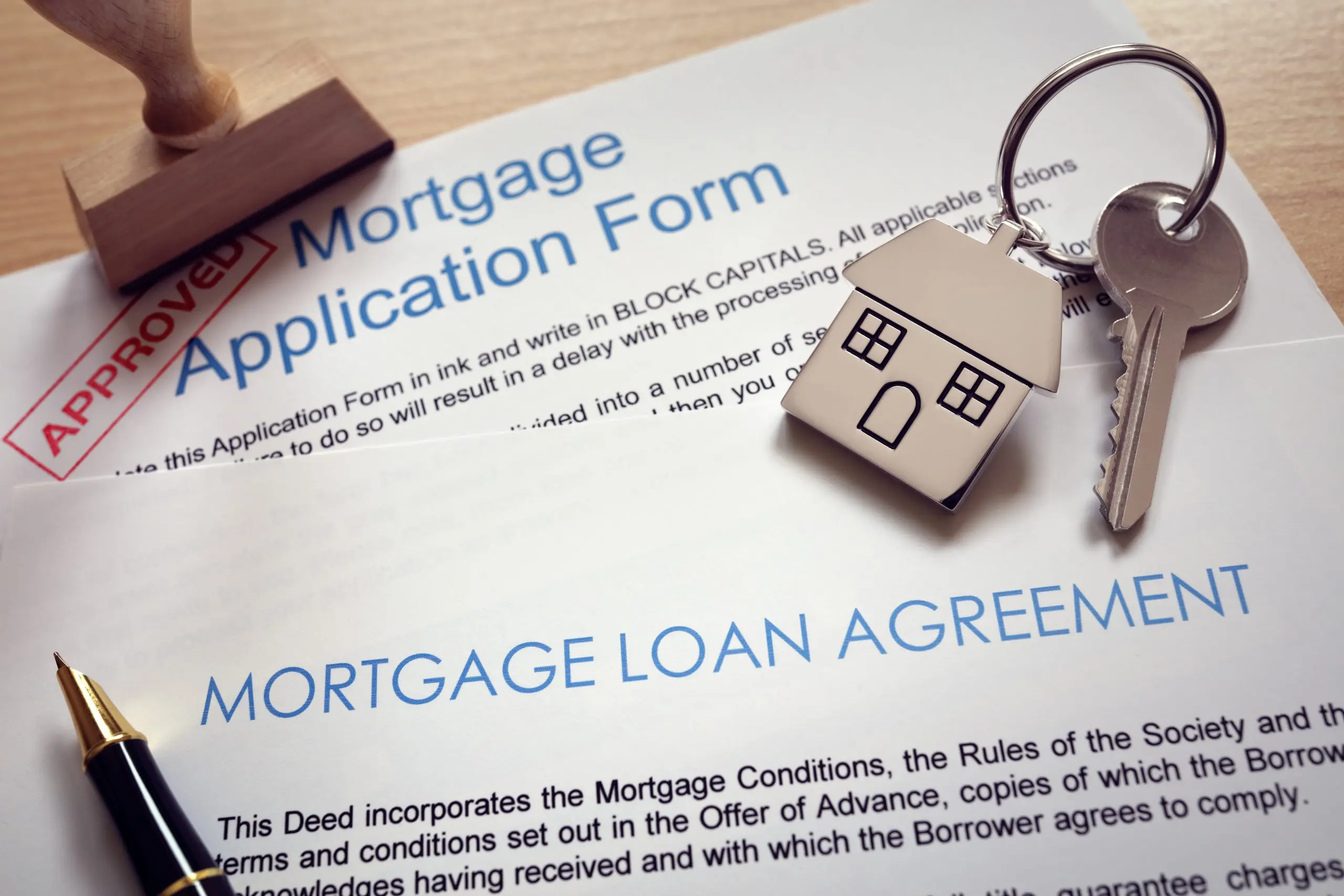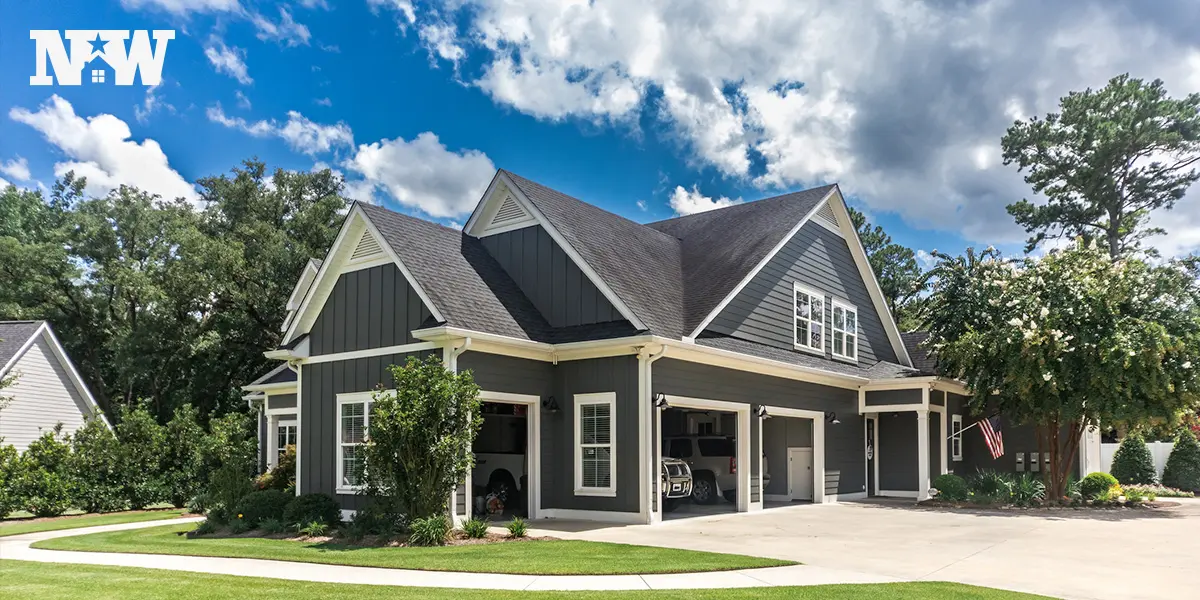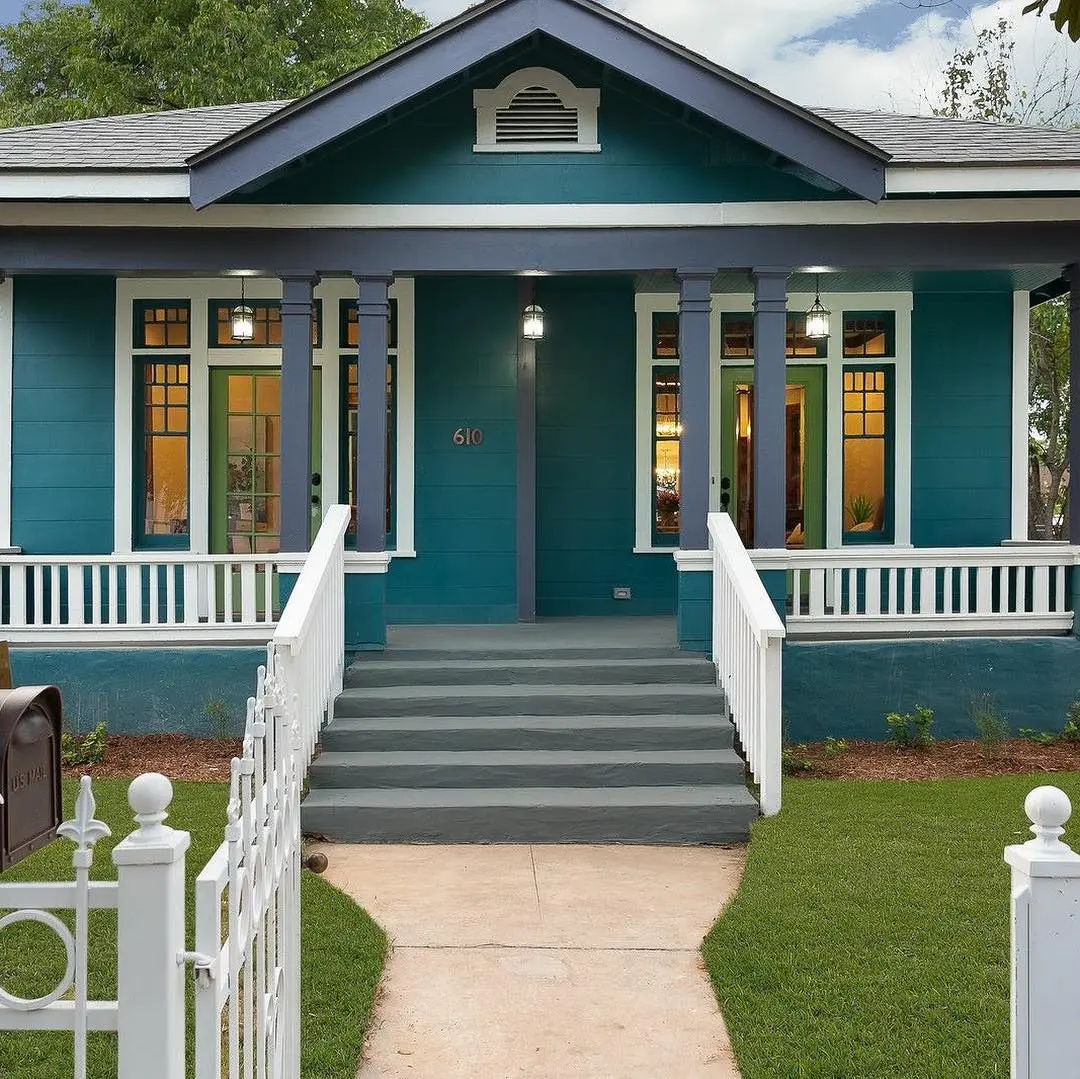Did you know you can have more than one mortgage? If you’re interested in real estate investing or purchasing a vacation home outside of your primary residence, this is important information to know.
Buying multiple properties, while a great way to increase your assets, can also be an involved process. Before you decide to invest in real estate or purchase another property, it’s essential to assess your financial situation. It takes some experience to navigate multiple mortgages, and this post covers some of the details you should consider.
Read on to learn how many mortgages you can have, how to finance multiple mortgages, and how to qualify for multiple mortgages.
How Many Mortgages Can You Have?
The Federal National Mortgage Association (FNMA), known as “Fannie Mae,” allows you to have up to 10 conventionally financed properties.
It’s possible to qualify for multiple mortgages at the same time, but the process can be complex. Lenders may see you as a greater risk the more mortgages you have and it may be difficult to get more than one mortgage at once. There’s also a chance that you’ll face higher requirements on everything: higher interest rates, higher down payment, higher cash in reserve, and higher credit score.
Qualifying for multiple mortgages can be challenging, but it’s possible. Continue reading for a comprehensive breakdown of everything you need to know about holding multiple mortgages.
Qualifying for Your First Four Mortgages
If you have good credit, other investment properties that are doing well, and can make a sizable down payment, this increases your chances of getting approved for multiple mortgages. For traditional mortgages, lenders will have requirements around the following areas, and the type of property you’re purchasing will affect what is required:
- Proof of income
- A credit score of around 620-740
- A loan-to-value ratio of up to 80%
- Statement of assets and debts
- Financial information on existing investment properties
- Information on and proof of existing conventional mortgages
- Down payment of at least 3% and private mortgage insurance if the down payment is less than 20%
- Debt-to-income ratio of around 43% or less
- Cash reserves of possibly up to six months
When financing your first four properties, you can choose to work directly with a lender or go through a mortgage broker. Mortgage brokers are intermediaries between borrowers and lenders. They can help you find the best mortgage rates for your goals and finances. Also, a mortgage broker who is experienced in real estate investment will likely already be familiar with lenders who are willing to provide multiple mortgages.
Qualifying for Mortgages Beyond Four
If you want to qualify for more than four mortgages, lenders will have stricter requirements and the approval process is more difficult. Lenders may require the following:
- Minimum credit score of 720
- 25% down payment for single family homes, 30% for duplexes and multi-unit properties
- Zero late mortgage payments
- No bankruptcies or foreclosures within the last seven years
- Cash reserves of up to six months to cover principal, interest, taxes, and insurance (PITI) coverage on all properties
- Two years of tax returns to show all income from rental properties
Fannie Mae 5-10 Properties Program
Prior to the 2008 housing crisis, real estate investors were limited to four financed properties, including their primary residence. Fannie Mae rolled back that rule, and now investors can finance up to 10 properties simultaneously.
It may be difficult to find a lender, as having this many mortgages is seen as more risky for the lender. Requirements are the same as for qualifying for more than four mortgages, with the additional requirements that there cannot be any bankruptcies, foreclosures, or delinquencies of over 30 days in the mortgage history and you must submit a 4506-T tax form.
Other Ways to Finance Multiple Mortgages
As a real estate investor, conventional loans aren’t your only option for financing more than four properties. Here’s a look at a few of your options.
Blanket Mortgage
Blanket mortgages allow you to finance multiple properties under the same mortgage agreement. Commonly used by real estate investors, commercial property owners, and real estate developers, blanket mortgages are an efficient way to qualify for multiple mortgages. These loans are not intended for primary residences or vacation homes.
It is important to note that closing costs on a blanket mortgage are much higher than a conventional mortgage. Additionally, you may not be able to purchase multiple properties located in different states under the same blanket mortgage.
Portfolio Mortgage
A portfolio mortgage is a mortgage that remains in the lender’s portfolio, rather than selling it to a secondary company. This is beneficial for the borrower because oftentimes these mortgages have more flexible terms and faster approval times. But, with these benefits come some trade offs. Because the lender is assuming the entire risk of the portfolio loan, the loan has higher interest rates and there are penalties for paying it off early. With a portfolio mortgage, you can finance multiple properties under the same loan.
Hard Money Loans
If you’re looking for fast financing, hard money loans are a viable option. Hard money loans come from private individuals or companies instead of a financial institution. These loans have a faster and less strict approval process. Investors typically close on this type of loan in a matter of days, rather than the standard month-long timeline of a conventional mortgage.
For these loans, the most important thing to the lenders is the property’s value, not necessarily the borrower’s credit. With a hard money loan, the property being purchased is offered as collateral. Meaning, if you default on the loan, the lender gets the property. These loans also come with a high interest rate and can sometimes require a significant down payment. The terms are set by the individual lenders, so the requirements can vary.
Cash-Out Refinancing
As you pay off your mortgage, you increase the amount of equity you have in your property. Cash-out refinancing allows you to tap into this equity and take the cash as a lump sum to put toward a larger mortgage on a new property. Essentially, you’re paying off an old mortgage, replacing it with a new one, and getting the difference in cash. You’re borrowing more than you owe on the property, so that’s where that cash difference comes from. Cash-out refinancing is different from taking out a second mortgage because it doesn’t add another monthly payment to your list of bills; it’s replacing your old mortgage. Then, you can use this cash to purchase an investment property, or whatever else you want.
Pros of Multiple Mortgages
- Real estate can be a reliable investment with a steady monthly income, compared to other investment options.
- You’re eligible for tax breaks and incentive programs.
- You don’t need as much liquid cash to secure multiple mortgages (with the exception of down payments and closing costs).
- You can use the equity you have in one property and leverage it to pay for another one.
Cons of Multiple Mortgages
- It can be difficult to get more than one mortgage, as it is more of a risk for lenders.
- Multiple mortgages means more debt. In the event of a change in income or if you lose your job, you will still be responsible for all of the payments.
- Your loans will likely have higher interest rates from traditional lenders. For this reason, real estate investors with many properties choose to work with private lenders or business partners.
- You will likely encounter higher requirements for approval, like credit score, down payment, and cash reserves.
How to Manage Multiple Mortgages
Managing multiple mortgages can be challenging, but rewarding if done correctly. Here are some proven ways to help you manage multiple mortgages effectively:
- Organize and track your finances: Keep a record of all your mortgages, interest rates, terms, and payment schedules. Use a spreadsheet or financial software to help you stay organized and keep track of due dates, payments, and balances. When it comes to your payment dates, you can choose to have them all due on the same day, or you can stagger payments. It’s up to you. Build a monitoring system to keep track of all of the important dates and deadlines for each of your mortgages. Don’t rely on your lender to keep track of these, especially if you choose to finance through nontraditional options. It’s also possible that you won’t have the same lender for each property, which further complicates the organization process. Working with the same financial institution makes the organization easier, but working with different lenders might secure you a better interest rate.
- Build an emergency fund: Having an emergency fund can save you from defaulting on your mortgage payments in case of unexpected events like job loss or medical emergencies. Aim for at least six months of living expenses in a high-yield savings account.
- Maintain good credit: A strong credit score can help you secure better interest rates and refinancing options. Regularly check your credit report and work on improving your score by paying your bills on time and reducing your overall debt.
- Refinance when it makes sense: Refinancing your mortgage can help lower your monthly payments, consolidate debt, or switch from an adjustable-rate to a fixed-rate mortgage. Always consider closing costs and other fees associated with refinancing before making a decision.
- Utilize tax benefits: Mortgage interest and property taxes are tax-deductible in many countries, including the United States. Keep track of these expenses and consult a tax professional to ensure you are taking full advantage of the deductions available to you.
- Consider hiring a property manager: If you have multiple rental properties, a property manager can help with tenant screening, rent collection, and property maintenance, which can save you time and effort.
- Leverage equity: As you pay down your mortgage and your properties appreciate in value, you may be able to access equity through a home equity loan or line of credit. This can provide additional funds for property improvements, debt consolidation, or purchasing additional properties.
- Stay educated: Keep up with industry trends, interest rates, and real estate market conditions. This knowledge can help you make informed decisions about refinancing, selling, or purchasing additional properties.
- Diversify your investment portfolio: While real estate can be a profitable investment, it’s essential to diversify your portfolio to spread risk. Consider investing in other asset classes such as stocks, bonds, or mutual funds.
- Plan for the long-term: Establish clear financial goals and regularly review your progress. This will help you stay focused on your objectives and ensure that you’re on track to achieve them.
FAQs Regarding Multiple Mortgages
Can I Have Two Mortgages on Two Different Properties?
Yes, you can have up to 10 mortgages simultaneously. However, the more mortgages you have, the more difficult it is to qualify. You must have excellent credit and a good track record with your other properties, for starters, in order to be considered for additional mortgages. If you’re a first-time home buyer, it will be more difficult to qualify for two mortgages at the same time. Lenders want to know that you have a good track record and history with real estate before approving additional mortgages.
Can I Have Two Primary Residences?
In short, no, you can’t have two primary residences. There are certain special cases where the IRS makes an exception, like if you are a non-occupying co-borrower on an FHA loan or if your family has grown too large for your current residence. But in the context of investment real estate properties, no, you cannot have two primary residences.
Your primary residence is the property where you live for most of the year. It’s the address listed on your driver’s license, tax returns, with the USPS, and on your voter registration card. Your primary residence qualifies for a lower mortgage rate and income tax benefits, which is why you are only permitted one primary residence.
Can I Put Offers on Multiple Houses at the Same Time?
The answer here: it depends. It’s best to check with a real estate attorney. It might be illegal in your state to put in multiple offers on different homes simultaneously, especially if you only intend to buy one of the homes. If you make two offers and both are accepted and you only intend to buy one of the properties, you could lose your deposit and potentially face other legal ramifications. Many real estate agents consider putting in multiple offers to be unethical. Again, it’s best to consult with a real estate attorney to determine the right course of action.
Can I Get a Second Mortgage to Buy Another House?
Yes. You can use a home equity loan to buy an investment property or a second home. Your home equity is the amount of your home you actually own. As you pay off the principal on your loan, you build equity. Interest payments do not count toward your home equity. A home equity loan is a type of second mortgage that allows you to take a percentage of your equity as a cash lump sum. You then have to pay back the secondary lender in monthly installments with interest. In contrast to a cash-out refinance, you will have two mortgages on the same property.
A home equity line of credit (HELOC) is another option for a second mortgage. Rather than receiving a cash lump sum, your lender approves a line of credit based on the amount of equity you have in your home. HELOCs come with a “draw period,” meaning a predetermined amount of time in which they are valid. During this time, you must make minimum monthly payments as you would on a credit card. When the draw period is over, you must pay the entire balance left on the loan. Some lenders will require a lump-sum payment and others may allow repayments in monthly installments. If you’re unable to repay the amount you borrowed, your lender can take your home.
If you have high equity and a good credit score, there might be more affordable options for you, like a cash-out refinance. It’s important to consider all of the factors and look at all of your options to determine what’s right for your situation before making a decision.







